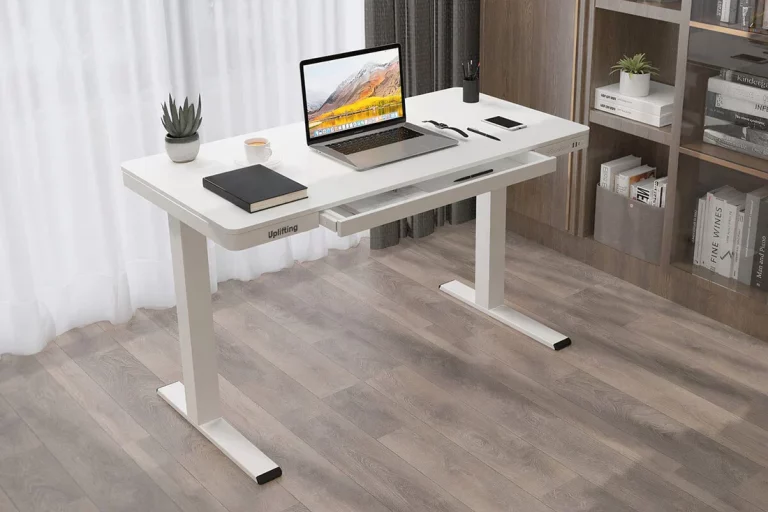Standing desks have become a big deal lately, popping up in offices and homes everywhere. But what’s all the fuss about? Are these adjustable desks really that beneficial? Do they live up to the claims of boosting health and productivity? In this guide, we’ll explore the world of sit-stand desks, answering your questions about their benefits, how to use them right, and more. Let’s dive in!
So, Are Standing Desks a Good Idea? In short, yes — standing desks, also known as sit-stand desks, are generally a good idea. They offer several potential health and productivity perks compared to traditional sitting desks. However, whether they’re right for you depends on your personal needs, and it’s important to use them correctly to enjoy the benefits.
What Makes Standing Desks So Popular
Standing desks aren’t just a trend, they’ve become a staple in modern workspaces for good reasons. As more people look for ways to stay healthy and energized while working, these desks offer a practical solution that fits into everyday routines. Adjustable desks have caught on for a few key reasons:
- Health Perks: Many people are attracted to sit-stand desks because of the potential health benefits, like reducing the risk of obesity and heart issues, and improving posture.
- More Energy: Standing can help beat that mid-afternoon slump, keeping you more alert and focused throughout the day.
- Better Productivity: Some folks find they’re more productive and creative at a standing desk, possibly because of improved blood flow and less sitting-related fatigue.
- Customization: Standing desks are adjustable, letting you switch between sitting and standing to suit your preferences.
- Ergonomics: When set up right, standing desks can enhance ergonomics, lowering the risk of muscle and joint issues.
How Long Should You Stand at a Standing Desk?
There’s no perfect answer for everyone, but it’s smart to start slow. Try standing for 15-30 minutes every hour and gradually increase as your body adjusts. Pay attention to how you feel and don’t push it. A good balance is to aim for a 50/50 mix of sitting and standing throughout your workday.
Adjustable desks can be great for your back when used properly. They encourage better posture and reduce the risk of back pain that comes from sitting too long. Just remember to keep your ergonomics in check and take breaks to stretch and move around.
While standing desks alone won’t magically melt away belly fat, they do burn more calories than sitting. Combined with a healthy diet and regular exercise, they can help with weight management. Plus, they’re great for reducing neck strain by keeping your screen at eye level.
It’s okay to lean on your desk occasionally but try not to rely on it too much. Standing is most effective when you maintain good posture, so it’s better to use a footrest for occasional comfort rather than leaning on the desk.
Standing desks can help fight off midday fatigue by promoting better circulation and reducing the chances of energy slumps that come with too much sitting. But everyone’s different, so make sure to keep your desk set up ergonomic and take regular breaks to prevent tiredness.
How to Maximize the Benefits of Your Standing Desk Setup
If you’re already using a standing desk or thinking about getting one, there’s more to it than just standing up. To truly get the most out of your standing desk, it’s important to focus on your overall workspace setup and habits. Here’s how you can take your standing desk experience to the next level.
Ergonomics First
The key to a successful standing desk setup is ergonomics. Make sure your desk is at the right height so your elbows are at a 90-degree angle when typing, and your monitor is at eye level to prevent neck strain. Consider using an anti-fatigue mat to reduce pressure on your feet and legs while standing.
Movement Is Essential
Standing still for long periods can be just as problematic as sitting. Incorporate movement into your routine by shifting your weight, taking small walks, or doing stretches. You can even use a balance board or a footrest to keep your legs engaged while standing.
Invest in Comfort
Don’t skimp on your chair, either. When you’re not standing, a high-quality ergonomic chair is crucial. Alternating between sitting and standing will help you avoid discomfort and fatigue, ensuring that you stay comfortable and productive all day.
Listen to Your Body
Lastly, pay attention to how your body responds. If you start to feel discomfort, adjust your setup, take a break, or switch between sitting and standing. Everyone’s body is different, so finding what works best for you is key to maximizing the benefits of your standing desk.
Final Thoughts on This Perfect Adjustable Solution
Standing desks can be a fantastic addition to your workspace, especially as flexible work setups become more common. When used correctly and paired with a healthy lifestyle, they can boost your health, productivity, and overall comfort.
Experts agree that incorporating movement throughout your day, whether through a sit-stand desk or regular breaks, is crucial for long-term well-being.
Additionally, research shows that alternating between sitting and standing can help prevent common workplace injuries and reduce the risk of chronic health issues. Whether you’re working from the office or home, standing desks are worth considering for a healthier and more productive future.

